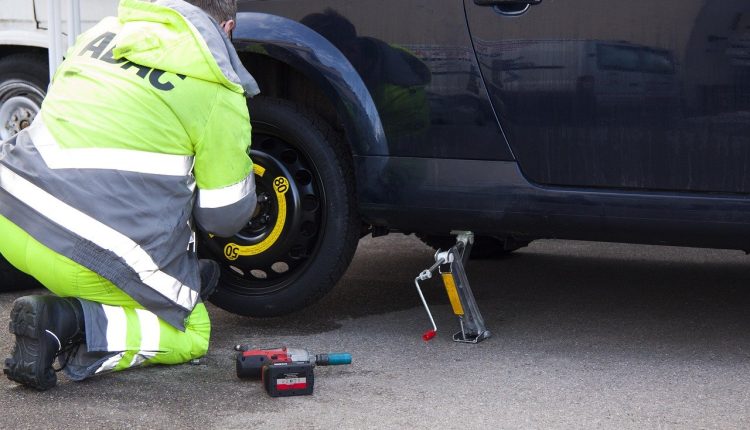Why UK Drivers Need Auto Shut-Off Tyre Inflators for Safer Journeys
Key Takeaways:
- Auto shut-off technology in tyre inflators prevents dangerous over-inflation and ensures precise pressure levels every time you use them.
- Maintaining proper tyre pressure is critical for safety, with 40% of car-fault accidents linked to underinflated tyres.
- Battery performance in rechargeable pumps can be affected by cold weather, making reliable auto shut-off even more important.
- Checking tyre pressure at least monthly can extend your tyres’ life by up to 25% and improve fuel economy by around 5%.
Why Auto Shut-Off Matters for Your Safety
Picture yourself stranded on a dark road with a flat tyre and no way to accurately gauge when to stop inflating. That scenario shows why auto shut-off in tyre inflators isn’t just a luxury—it’s a crucial safety feature. Reliable auto shut-off technology in modern pumps, like the one offered by AutoPump, removes the guesswork from proper inflation, giving drivers peace of mind during roadside emergencies. This intelligent feature automatically stops the inflation process once your preset pressure is reached, preventing dangerous over-inflation that can lead to blowouts.
The consequences of incorrect tyre pressure are severe. According to safety data, 40% of car-fault accidents are related to under-inflated tyres. Under-inflation causes handling problems, increases stopping distances significantly, and raises the risk of dangerous blowouts. On the flip side, overinflation reduces your tyres’ contact with the road, negatively affecting handling and causing premature wear in the centre of the tyre.
Understanding Rechargeable Tyre Inflators
Types of Compact Car Tyre Inflators
Portable tyre inflators come in several varieties, but the two main categories are handheld devices and console units. Handheld inflators are compact, lightweight, and designed specifically for emergency use in your vehicle. They’re easy to store in your trunk and simple to operate when needed. Console units, while more versatile for household needs like inflating sports equipment or air mattresses, are generally bulkier and less practical for roadside emergencies.
Power sources for these inflators vary widely. Traditional models plug into your car’s 12V socket (cigarette lighter), while newer rechargeable battery-powered models offer greater flexibility and convenience. Wall-plug models exist too, but they’re less practical for roadside situations.
How Rechargeable Pumps Compare to Other Power Sources
Rechargeable tyre inflators offer significant advantages over traditional corded models. The most obvious benefit is portability – you’re not tethered to your vehicle’s power socket or a wall outlet. This means you can inflate tyres anywhere, whether you’re deep in a parking garage with no outlet nearby or helping a stranded motorist on a remote road. The convenience factor alone makes rechargeable models increasingly popular.
However, rechargeable pumps do have limitations. Battery capacity directly affects how many tyres you can inflate on a single charge. Premium models might handle all four tyres on your vehicle, while budget options might struggle to complete two before needing a recharge. Additionally, battery performance degrades in cold weather, potentially leaving you with less power when you need it most during winter emergencies.
Working Mechanism of Auto Shut-Off Technology
The auto shut-off feature in quality tyre inflators relies on built-in pressure sensors that continuously monitor the current PSI level. These sensors connect to microprocessors that compare the current pressure against your preset target. Once the desired pressure is reached, the system automatically cuts power to the pump motor, preventing over-inflation.
This technology works through an intricate combination of pressure sensing and valve control. The pressure sensor reads the real-time PSI inside the tyre, while valves controlled by the microprocessor manage airflow. The entire process happens in milliseconds, ensuring precise pressure control that manual monitoring simply cannot match.
Benefits of Auto Shut-Off in Rechargeable Pumps
Precise Pressure Control and Accuracy
One of the most significant advantages of auto shut-off technology is the precision it offers. Manual inflation requires constantly stopping to check pressure readings, which is both inconvenient and prone to error. With auto shut-off, the guesswork is eliminated. The system delivers exactly the pressure you set – no more, no less.
Digital displays in modern inflators provide readings accurate to within a fraction of a PSI, compared to analog gauges that can be off by several PSI. This precision ensures your tyres maintain optimal contact with the road, improving handling, braking, and overall safety. The combination of digital gauges and auto shut-off technology delivers consistent results that even professional mechanics would approve of.
Prevention of Dangerous Over-Inflation
Over-inflated tyres are a serious hazard that many drivers unknowingly create. When tyres contain too much air, the centre bulges outward, reducing the contact patch with the road. This decreased contact area compromises traction, particularly during cornering and emergency manoeuvres. Auto shut-off technology eliminates this risk by ensuring inflation stops precisely at the manufacturer’s recommended pressure.
Beyond the immediate safety concerns, over-inflation accelerates wear in the centre of your tyre tread. This uneven wear pattern not only shortens tyre life but creates a potentially dangerous situation where the middle of your tyre has significantly less tread than the edges. With auto shut-off, you protect both your safety and your investment in quality tyres.
Extended Battery Life Efficiency
A lesser-known but important benefit of auto shut-off technology is its positive impact on the inflator’s battery life. Without this feature, users often run the pump longer than necessary, either from distraction or difficulty reading pressure gauges in low light. Each extra second of unnecessary operation drains precious battery capacity.
Auto shut-off ensures the pump runs exactly as long as needed – no more, no less. This efficiency helps preserve battery life per inflation session, potentially allowing you to inflate more tyres on a single charge. For emergency situations where every bit of battery life matters, this efficiency can make a crucial difference.
Convenience During Emergency Situations
When you’re dealing with a flat tyre on a dark roadside, the last thing you want is the added stress of monitoring pressure levels while trying to stay safe. Auto shut-off technology transforms this experience by allowing you to focus on your surroundings while the inflator handles the precision work.
Selecting the Right Rechargeable Inflator
1. Essential Features Beyond Auto Shut-Off
While auto shut-off is a critical feature, several other elements contribute to a truly useful rechargeable tyre inflator:
- Integrated work light: A bright LED work light helps you see valve stems and pressure readings in low-light conditions, making roadside emergencies less stressful.
- Multiple power options: The best inflators offer redundancy with both rechargeable battery operation and direct 12V vehicle power capabilities.
- Digital display: Clear, backlit digital pressure readings eliminate guesswork and ensure accurate inflation.
- Durable air hose: Look for inflators with reinforced, flexible hoses that can withstand repeated use without cracking or leaking.
2. Pressure Range and Inflation Speed
The ideal pressure range for your inflator depends on your specific vehicles. Standard passenger cars typically require 30-35 PSI, while some SUVs and trucks need higher pressures for proper tyre performance. Ensure your chosen inflator can comfortably exceed your highest required pressure by at least 10-15 PSI to account for potential sensor variance.
Inflation speed is equally important, especially in emergency situations. Quality inflators should be able to inflate a standard passenger tyre from flat to the recommended pressure in a reasonable timeframe. Consider both speed and other factors like portability and runtime when making your selection.
3. Battery Capacity and Charging Options
Battery capacity determines how many tyres you can inflate on a single charge. Look for specifications that clearly state operational capacity – such as “can inflate 4 car tyres from flat to recommended pressure on one charge” rather than vague runtime claims. Lithium-ion batteries generally offer the best combination of capacity, weight, and cold weather performance.
Charging options matter too. The most versatile inflators provide multiple charging methods, including USB-C, wall adapters, and direct vehicle power. Quick-charge capabilities are particularly valuable, allowing you to rapidly restore partial battery capacity when time is limited.
4. Size and Storage Considerations
The ideal rechargeable inflator balances functionality with portability. Compact units that can be stored in your glove compartment provide immediate access during emergencies, while slightly larger models might offer better battery capacity and inflation speed. Consider where you’ll store the inflator in your vehicle and whether it includes a protective case to prevent damage during storage.
Some inflators feature practical design elements that improve portability, such as built-in cord and hose management systems, folding handles, or magnetic mounting options. These thoughtful touches can make a significant difference in real-world usability.
The Bottom Line: Is Auto Shut-Off Worth It?
For rechargeable tyre inflators, auto shut-off technology isn’t just a convenience feature – it’s a necessary function that addresses the core challenges of portable inflation. The precision it provides ensures optimal tyre pressure, which directly translates to safety, fuel efficiency, and extended tyre life. The added confidence of knowing you won’t dangerously over-inflate your tyres makes this feature worth any additional cost.
The combination of rechargeable power and auto shut-offcreates the ideal portable inflation solution, offering both convenience and precision in emergency situations. While basic models without auto shut-off might cost less upfront, the potential costs of incorrect inflation – both in tyre wear and safety risks – make the investment in quality auto shut-off technology the wiser choice for most drivers.


Comments are closed.